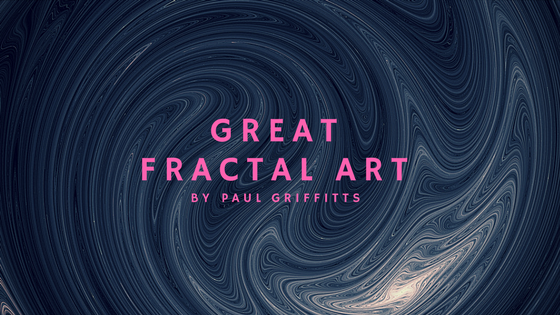I have talked about fractals multiple times before. Also, you probably know how much I enjoy discovering new artist in this domain. This post will be all about Paul Griffitts’ work.
Fractals have been a source of inspiration for many artists since they were first described by Benoit Mandelbrot in 1975. The well-known property of self-similarity is what makes it so unique and appealing to artists. Scale (the concepts of micro or macro, infinitesimal and infinity) is the most important tool that an artists plays with when it comes to fractals. Besides the scale, symmetry is very important when talking about fractals. In mathematics, fractals are also called expanding symmetry or evolving symmetry. Paul Griffitts’ work looks wonderful, here a couple of his works with a little flavor of spirals:
Fractal art has developed from the mid-1980s. It is a form of algorithmic art created using specific fractal generating programs. It is an interesting art, full of mathematics and notions from computer science. Every piece of art created is unique – the butterfly effect shows that even a small change in one single variable can give an unpredictable outcome. There are many techniques and programs to create them, but I wanted to talk about 2 in this post:
- Iterated function systems – where the fractal is created as a union of several copies of itself, each copy being transformed by a function. These are sometimes called IFS fractals and can be of any number of dimensions, which sounds had to imagine. There are many well-known example that fall into this category: Koch snowflake, Menger Sponge and Sierpinski carpet.
- Strange attractors – this technique uses solutions of a system of initial-value differential equations that exhibit chaos.
Before I get into more technicalities, here are some more images created by Paul Griffitts:
If you want to find out more about Paul Griffitts, I totally recommend checking his website. You can find out more about his exhibitions, art galleries and where you can find his great work displayed. Also, if you are in love with coloring books and you have a great collection at home, then you will love his coloring book. Furthermore, you can read more about his opinion on fractals:
Fractals have been described as a paradox immeasurably complex, but amazingly simple, highly geometric, yet elegantly beautiful.
Hope you enjoy this post. Have a great day. You can find me on Facebook, Tumblr, Google+, Twitter and Instagram. I will try to post there as often as possible.
Lots of love and don’t forget that maths is everywhere! Enjoy!


Leave a comment